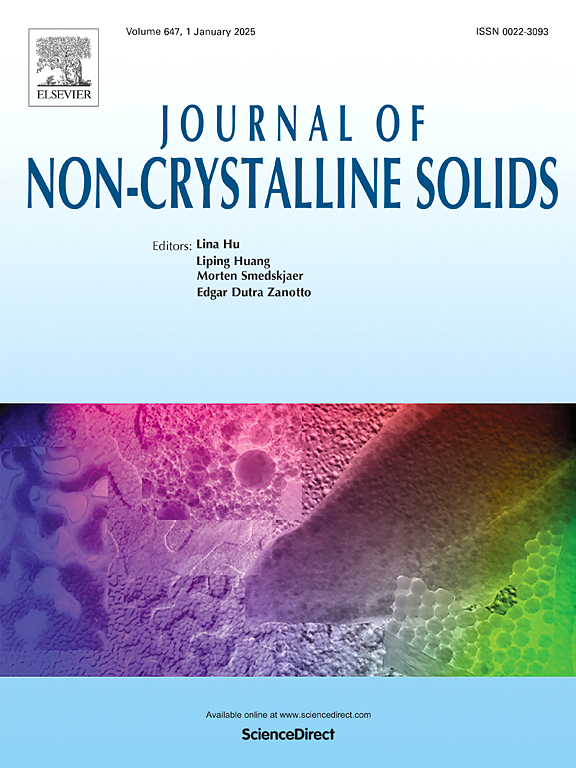Systematic assessment of the compositional dominance over physico-chemical properties in the SiO2-Al2O3-B2O3 based glassy networks
IF 3.2
3区 材料科学
Q1 MATERIALS SCIENCE, CERAMICS
引用次数: 0
Abstract
Series of seven aluminoborosilicate glasses was studied by means of thermo-analytical and spectroscopic methods to identify the influence of the individual network-forming oxides (SiO2, Al2O3 and B2O3) on the particular classes of measured properties. The compositional correlation of the observed trends was enumerated by means of multilinear regression analysis. The base physico-chemical properties, such as density, refractive index and molar refractivity, were found to be a linearly additive combination of the roughly equally weighted contributions of the three network-forming oxides. The thermo-mechanical properties, i.e., the glass transition temperature (determined from volume, enthalpy and viscosity measurements) as well as coefficients of thermal expansion, were dominantly determined by the Al2O3 content. On the other hand, the internal properties of the viscous flow measured in the 107 – 1011 Pa·s range, i.e., the activation energy of viscous flow and kinetic fragility (defined under the Angell's concept) were driven by the B2O3 content.
求助全文
约1分钟内获得全文
求助全文
来源期刊

Journal of Non-crystalline Solids
工程技术-材料科学:硅酸盐
CiteScore
6.50
自引率
11.40%
发文量
576
审稿时长
35 days
期刊介绍:
The Journal of Non-Crystalline Solids publishes review articles, research papers, and Letters to the Editor on amorphous and glassy materials, including inorganic, organic, polymeric, hybrid and metallic systems. Papers on partially glassy materials, such as glass-ceramics and glass-matrix composites, and papers involving the liquid state are also included in so far as the properties of the liquid are relevant for the formation of the solid.
In all cases the papers must demonstrate both novelty and importance to the field, by way of significant advances in understanding or application of non-crystalline solids; in the case of Letters, a compelling case must also be made for expedited handling.
 求助内容:
求助内容: 应助结果提醒方式:
应助结果提醒方式:


